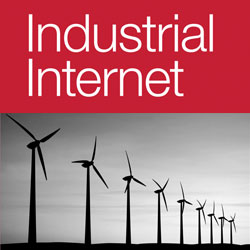As I mentioned at the time, part of the news when IBM announced its new heavy-duty MessageSight appliance to handle the vast quantity of real-time data sharing between sensors on the Internet of Things was that MessageSight would use the MQTT protocol to communicate the data.
MQTT, or Message Queue Telemetry Transport (whew!), is an existing protocol for sharing telemetry-style data which OASIS recently proposed as a standard for M2M data sharing. According to IBM, its primary virtues are “low power consumption, high performance and reliability (which) allow real time updates that can be acted upon immediately,” — important because of the need to reduce sensors’ drain on their batteries. Other types of pervasive devices that might use the protocol include “mobile phones, embedded systems on vehicles, or laptops and full scale computers.”
According to GigaOm, “..it’s already in use for satellite transmissions and in medical and industrial settings where low-bandwidth communications are essential. ” In addition to IBM, it’s already supported by Kaazing, Red Hat, TIBCO, and Cisco.
According to The New York Times, MQTT advocates say it could be the M2M equivalent of the Web’s HTTP protocol. Co-inventor Andy Stanford-Clark of IBM is one of my fav IoT experimenters (you’ve got to see his TedX talk about how he’s automated his home on the Isle of Wight — and didn’t stop there, making the whole island a laboratory for the IoT!). He and co-inventor Arlen Nipper wrote the first version of MQTT in 1998 for oil platform sensors.
As in several of my recent posts, the automotive industry was singled out by the NYT as one field where MQTT might be applied:
“Vijay Sankaran, director of application development for Ford, said improved message-handling technology will be vital to the company’s plans for automated diagnostics and new consumer services.
“Mr. Sankaran pointed to two examples. In the Focus Electric car, he said, Ford wants to get continual, detailed sensor data on the state and performance of the vehicle’s electric battery, then feed that information into product development.
“And drivers, Mr. Sankaran said, seek to do more things while in their cars. A stock trader, for example, might want to continue trading from the road. If the trader sent in an order to sell 30,000 shares of Apple, he said, that transaction must be reliably and securely communicated.
“’You need an advanced messaging engine for these kinds of services,’ Mr. Sankaran said.”
The Times article points out that for MQTT to achieve its full potential it must be adopted not only by IT companies such as IBM and Cisco, but also by “…industrial technology heavyweights including General Electric, Honeywell, Siemens and United Technologies.
These companies make many of the sensor-equipped big things in the so-called Internet of Things — like jet engines, power turbines and oil field equipment.”
MQTT looks like it will play a major role in allowing harvesting of data from sensor networks, but we’ll have to see how much of an IoT lingua franca it really becomes!
 with 2.4GHz connectivity using the 802.15.4 wireless standard. Web connectivity is available using a WiFi shield.”
with 2.4GHz connectivity using the 802.15.4 wireless standard. Web connectivity is available using a WiFi shield.”
